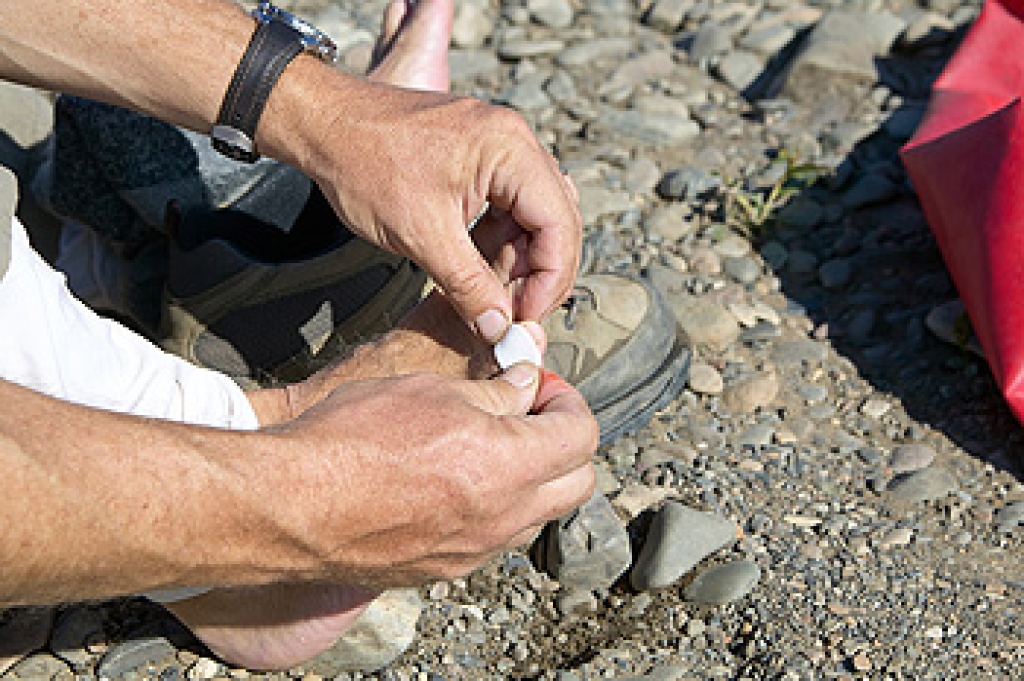
Foot blisters can be a painful consequence of an adventurous hike, disrupting the joy of exploring nature. However, with proper treatment, they can be managed effectively, allowing hikers to get back on their feet in no time. Begin by cleaning the blister and the surrounding area with mild soap and water to prevent infection. Avoid draining or removing the skin covering the blister to protect the wound from bacteria. Apply an antibiotic ointment and cover the blister with a sterile gauze pad to promote healing and prevent further friction. It is important to keep the affected area clean and dry to prevent additional irritation. Additionally, wearing well-fitted, moisture-wicking socks and properly breaking in hiking boots can help prevent blisters in the future. With patience and care, foot blisters can be effectively managed, allowing hikers to hit the trails with confidence once again. If you develop blisters after hiking, it is suggested that you seek the guidance of a chiropodist who can successfully treat them.
Blisters can usually be treated at home, however, if you have recurring blisters or experience significant discomfort or pain, please consult with Emily Yu, B.Sc from Uptown Foot Care Clinic. Our specialist will assess your condition and provide you with quality foot and ankle treatment.
What Is a Blister?
A blister is a small pocket of fluid in the upper skin layers and is one of the body’s natural responses to injury or pressure. Blisters can also result from burns, fungal or viral skin infections, and the feet are particularly prone due to ill-fitting footwear and friction. Friction on the skin causes the upper layer of skin to separate from the lower layers. The space that this separation creates then becomes filled with a liquid called serum, which protects the lower layers of skin.
Treatment
If you notice a blister on your foot, you can cover it with a soft bandage or dressing to protect it. Popping the blister is discouraged. Doing so exposes the raw skin underneath it to bacteria and also raises the risk of infection. If a blister pops naturally, let it drain before covering it with a bandage. Blisters usually heal on their own or with home treatment, however, if your blister is recurring, very painful, or appears infected, it is recommended that you see a chiropodist for treatment.
Prevention
You can help to prevent blisters by wearing comfortable, well-fitted shoes. Keep your feet dry by wearing moisture-wicking socks and dust your feet with talcum powder if they tend to get sweaty. If you have areas on your feet that are more susceptible to blisters, you might be able to prevent the blister from forming by covering it with a pad.
If you have any questions, please feel free to contact our office located in . We offer the newest diagnostic and treatment technologies for all your foot care needs.
